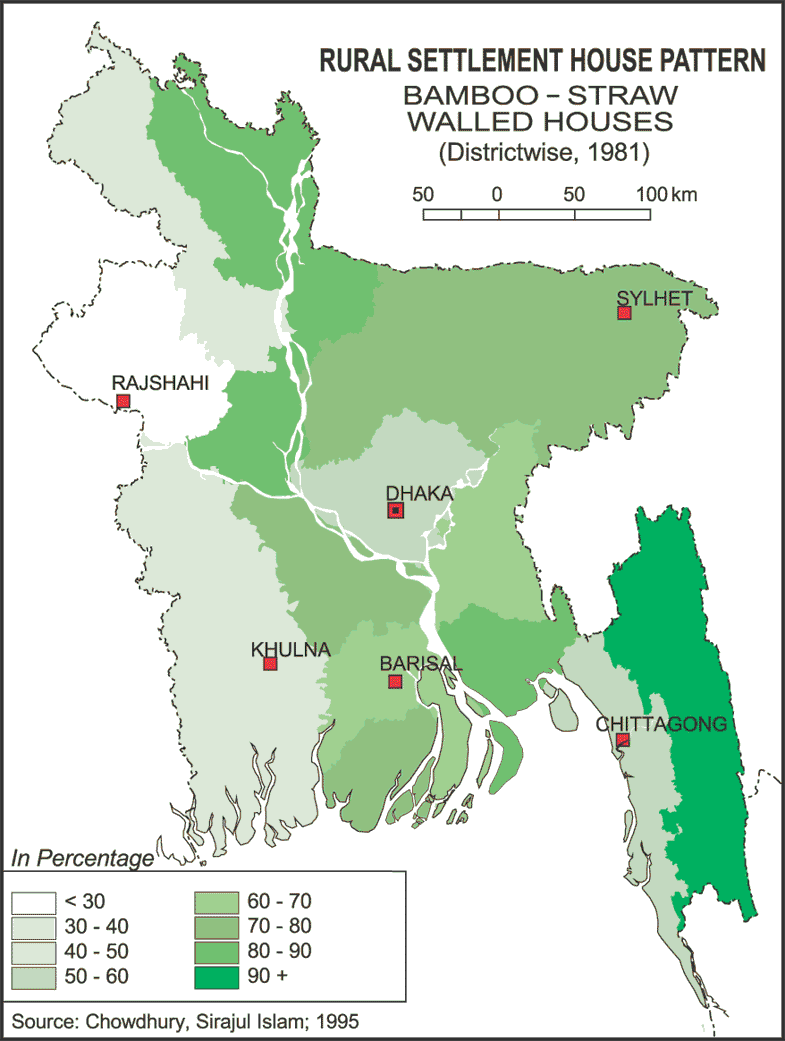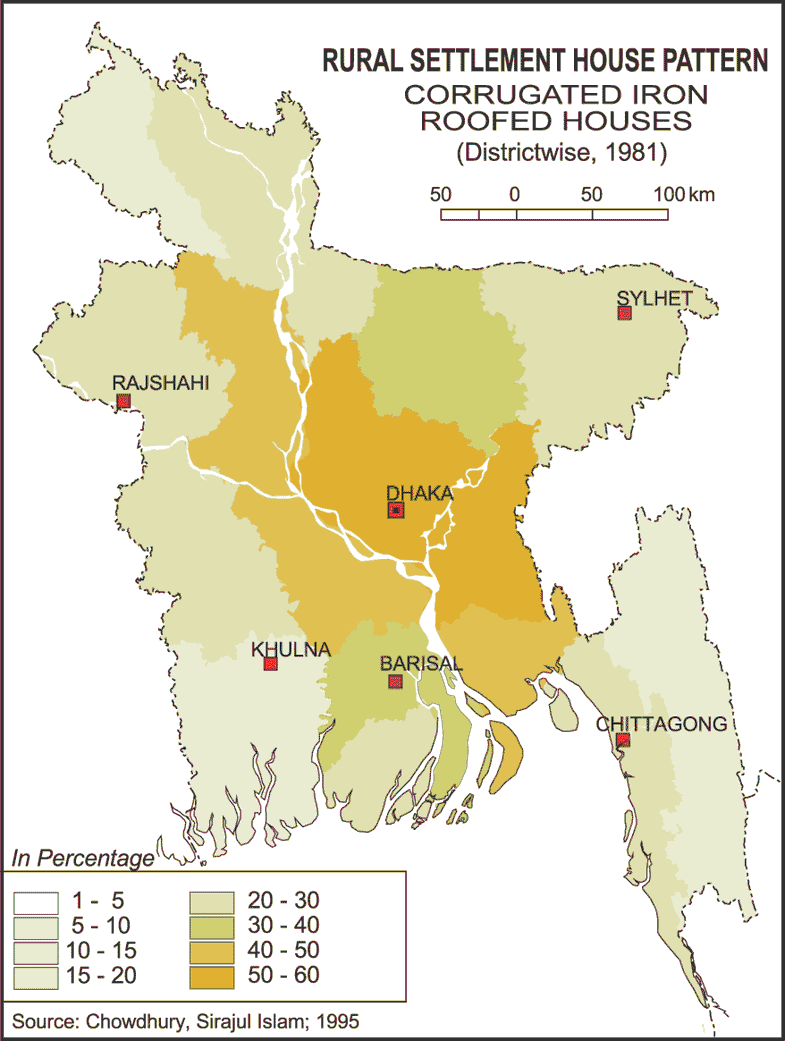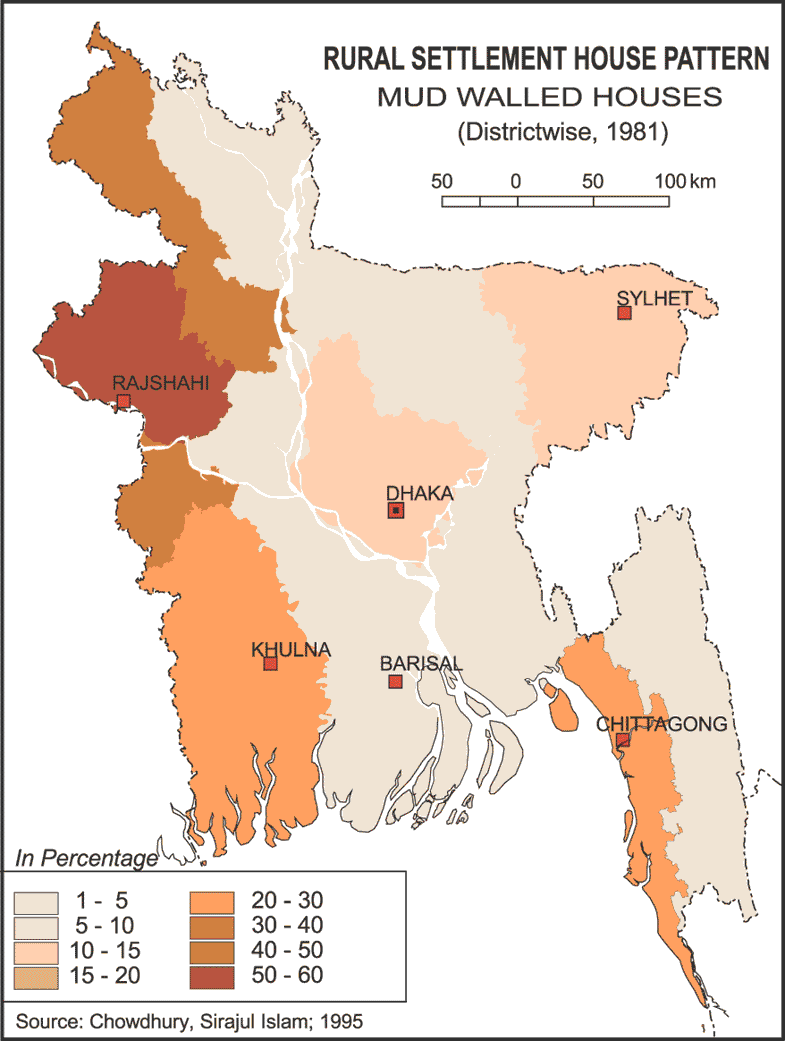Info
Rural Settlement House Pattern (1981) of Bangladesh
There are two types of housing in Bangladesh, rural and urban housing. Rural houses are a component of homesteads, the other components being the uthan (or courtyard), trees around the houses and, in some regions, one or two ponds around. The rural homestead, in turn, is a part of a Gram or village, a linear or clustered compact settlement. A rural homestead may have one or more houses. Structurally rural houses can be of different types. Sirajul Islam Chowdhury, a cultural geographer, classified rural houses of Bangladesh mainly on the basis of cultural and social influences. The types identified by him are:
choushala griha or a house with four units on four sides (bhita) of a courtyard or uthan in the middle; briti griha a house completely surrounded by wall made of bamboo or mud or other materials; atchala griha, an eight roofed house, four on the main structure and four over the attached verandahs; posta griha a house with raised platform all around. Sometimes, for rich families the platform can be pucca; dishala nanda griha with two houses on either side of the courtyard; shusthita griha or balanced house with verandahs on all sides; tribal house and adibashi house.
The choushala house is widely found throughout Bangladesh and the form has also found popularity in urban areas. briti, atchala, dishala, shusthita and posta houses are not too commonly seen these days. briti houses are seen only in Northern Dinajpur, atchala in Satkhira, dishala in Sylhet, shusthita in Sitakundu and Posta in Mirsharai. Tribal houses are found in the Chittagong Hill Tracts as well as in other districts inhabited by the tribal communities. Their houses are distinguished by form and function and mostly made of wood and bamboo, sometimes on platforms. Adibashi houses refer generally to those of the Santhals, one of the earliest of the indigenous peoples in Bangladesh. Their houses are made of mud walls. The current predominant house types in rural areas are the dochala or double tin (Corrugated Iron Sheet) roofs with bamboo walls, the all-tin dochala and the chouchala (four roofed), and the semi pucca houses.
Urban living in Bangladesh became prominent from the colonial period. Development of small townships in ancient Bengal by kings, maharajahs, zaminders, wealthy merchants and landowners started the era of urban housing. The European architectural design of housing for the elite became fashionable in the nineteenth century. In the Pakistan period (1947-71) modern structures were built for housing for the rich and powerful both in the public and private sectors. Large tracts of lands were acquired by government bodies and developed as planned residential areas and new satellite towns in Dhaka and other cities. Planned low-income high-density areas with small single storey pucca nucleus houses were also built, such as the ones in Mirpur, Dhaka. Housing in spontaneous urban poor settlements (or slums and squatter areas) consists of kutcha and semi- pucca structures similar to rural settlements.
Source: Banglapedia.




